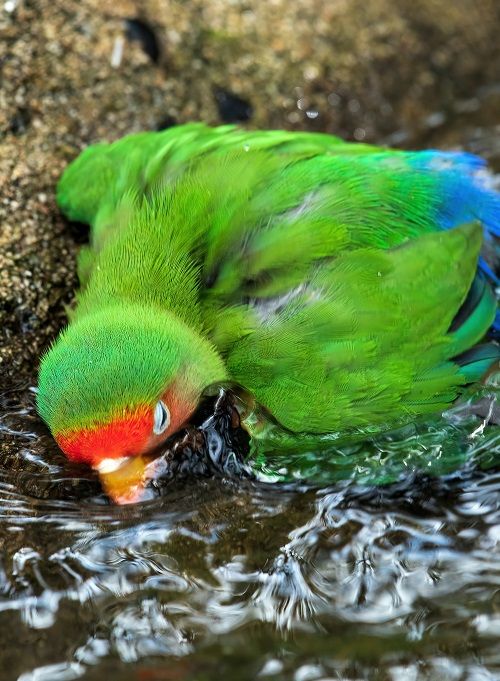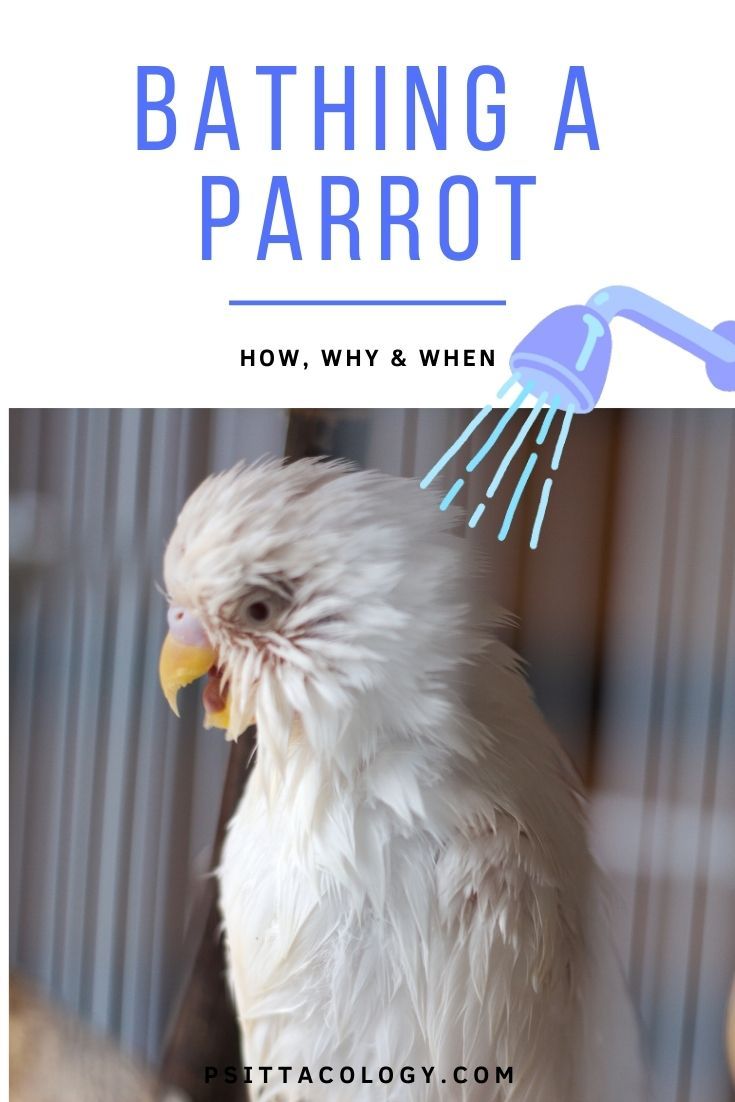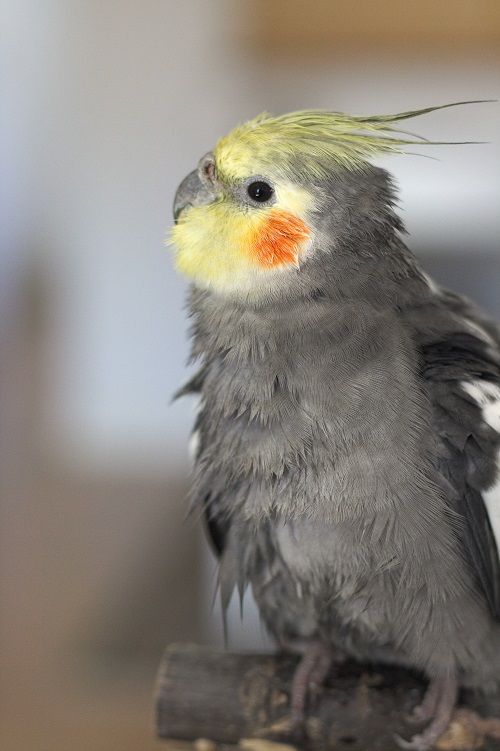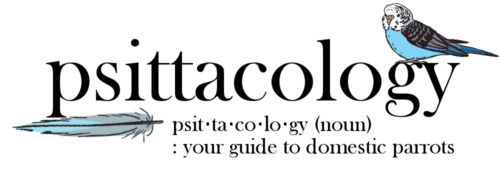If you’re thinking of adding a parrot to your family, you might be wondering if they like to bathe. After all, you’re probably aware that many of the wild birds that visit our gardens will bathe with much gusto! They love splashing around and you can even buy bird baths for your wild feathered visitors.
So what about parrots? Do they like to bathe? Should you bathe your parrot, and if so, how?
This post contains affiliate links. If you make a purchase, a small percentage will go directly to Psittacology at no additional cost to you. Thank you for supporting Psittacology!
Do parrots like to bathe?
That would be a clear and resounding yes!
Most parrots absolutely feel the instinctive desire to take baths. In the wild, it likely helps birds loosen dirt on their feathers, make preening easier and assist in keeping their feathers in condition. This, in turn, may help them avoid predators. As mentioned in some of the scientific literature, though, it still isn’t entirely clear what the exact function of bathing is for birds.
Many parrot owners report their birds seeking out bathing opportunities even when they aren’t provided: they’ll try to bathe in their water bowls or interpret a running kitchen tap as the perfect shower opportunity.
I do have to note that not all parrots will accept the concept of a bath immediately. If they weren’t stimulated to bathe by the breeder or their previous owner, and didn’t get the opportunity to learn from the parents, they can be a bit weary.
No worries! If your parrot has a case of water fright, there are things you can do.

Why should you bathe your parrot?
We don’t know exactly why parrots and other birds like to bathe, but there are strong indications that it’s important to them.
In one scientific study, the authors found that starlings deprived of the opportunity to bathe would feed less enthusiastically. Additionally, they’d be jumpier, possibly because they felt like their feathers weren’t in good condition to quickly escape possible predators.
So, one reason to offer your parrot the opportunity to bathe is that it might help it feel safer. Then there’s the enrichment part: we parrot owners are always trying to keep our birds’ smart brains entertained.
Toys and foraging opportunities are great for this, but why not add bath time as well? The bath itself is usually followed by a long preening session, helping to keep your parrot busy (and quiet!) for a good while.
Bath time is especially important for parrots going through a molt. They appreciate the soothing effect of the water on itchy, pin-feathered skin. The subsequent preening sessions can help loosen the sheaths on new feathers.
Did you know? While preening and taking care of its feathers after bathing, your parrot uses a gland near the base of the tail (the preen gland) to distribute oils across its feathers. The oils are what keeps their feathers relatively water resistant: important in the wild to avoid the rain from soaking them. That’s why much of the water just rolls off your parrot when it showers.

How to give a parrot a bath
After all this talk about how natural and important bathing is to parrots, you’re probably wondering how you should bathe your parrot. The most important thing to remember before you start trying to figure out which method your bird likes best is that you should never force it.
A parrot that’s not used to water can be scared of a spray bottle or become extremely stressed if you force it into the shower. That’s not what we want, of course! We want this to be a pleasant and positive experience.
If your bird is trying to get away or sits completely still, it’s probably not enjoying its bath. A happy, bathing parrot opens its wings, flaps around and bends in all directions. They can get really into it.
Parrot bath
The simplest way to give your parrot easy access to bathing water is by using a bird bath. You should be able to find parrot baths in your local pet store, which are usually larger than water bowls and can be attached to the cage. To keep it simple, you can also just place a deep plate filled with water near your parrot’s favorite playing area.
If you want to really give your bird the spa experience, you could opt for a fountain. The drinking fountains sold for dogs and cats are actually perfect for small parrots. It seems there’s something about the falling water that makes a fountain extra attractive to them.
Spray bottle
Is your parrot not a fan of using a dish or fountain to bathe? Another option you can try is to fill a spray bottle with water and see if this tempts it. Set the nozzle to a fine mist and gently spray your parrot from above, letting the water rain down on it like a gentle drizzle.
If your bird shows signs of distress or trying to get away, stop. Offer some treats to calm it down and try again later. It probably doesn’t understand why water is suddenly falling out of the sky and may perceive the spray bottle as scary.
Shower or sink
Does your parrot make a massive mess when you give it a bird bath to use? As mentioned, they can get really into it. It’s not unusual for them to fling water everywhere.
A great solution for this is to let your bird bathe in the shower or sink instead. Try setting your bird on the shower door while you take a shower, or using a shower perch placed away from the water. Does it show interest? Maybe if you place it by the sink and run the tap?
If yes, then by all means, let it splash around to its heart’s content.
Did you know? If your home gets chilly during the winter months, it might be a good idea to give your bird a little help drying. You could use a teflon/PTFE-free hairdryer set to lukewarm (some love it and will take an “air bath”!), set the air-con unit to warm and let your bird preen itself below, or even go for a bird-safe heat lamp.
How to get your parrot to bathe
Have you got a dirty parrot on your hand that didn’t get the memo about bathing? It can happen. Although bathing behavior is an instinctive thing for them, it does help if they can learn it from other birds. Neglected rescues especially can be scared of water.
What can you do? Luckily, there are quite a few things you can try to stimulate bathing. Combining the spray bottle method with lots of treats can be helpful, for example.
Here are a few of my other favorites:
- Splash your fingers around the bird bath. If your parrot sees you “bathing”, it might be tempted to follow suit.
- Place a mirror at the bottom of the bird bath. This works in a similar fashion: if “another parrot” is in the bath, then it must be safe.
- Place lettuce or other leafy greens in the bird bath. Celery leaves did the trick for me once with one of my water-shy budgies.
- Hang wet lettuce next to a perch. Some wild parrots like to use wet leaves to bathe after a rainstorm, so why not try to tempt yours in a similar manner?

Emergency baths
Has your parrot gotten into a sticky situation? Tried to bathe in a dirty, oily pan, gotten covered in poop, that sort of thing? In some cases you’ll have to wash your bird yourself, especially if it concerns substances that can be damaging if it ingests them while trying to preen itself. The use of a bird shampoo might be warranted if the feathers get covered in oil.
If a moist washcloth won’t do the trick, you can fill a small tub with lukewarm water and gently wash your parrot’s body and wings without rubbing. Stay away from the face to avoid getting water in its nostrils.
If you’re using a bird shampoo, follow the instructions on the bottle. After the bath, gently wrap the bird in a towel for a bit to dry off some of the water and then let it take care of preening itself.
Keep in mind that most parrots absolutely won’t appreciate being bathed like this. It’s an emergency thing only and yes, unfortunately, there’s a chance you’ll get bitten in the process.
Frequently asked questions
You can give your parrot access to a bath at all times so it can decide for itself. If you go for the spray bottle method, you can try starting with once a week.
Baby birds can’t bathe themselves like adults, but they do tend to get dirty. You can use a cloth moistened with warm water to clean poop or formula off them.
If you’re letting the bird take the lead, as you should, then not really. They’ll stop bathing by themselves if they feel they’ve had enough, at which point you should refrain from forcing it.
If you have any more questions about bathing a parrot or if you’d like to share your own experiences, don’t hesitate to leave a comment below!
Sources & further reading
Brilot, B. O., & Bateson, M. (2012). Water bathing alters threat perception in starlings. Biology Letters, 8(3), 379-381.
Brilot, B. O., Asher, L., & Bateson, M. (2009). Water bathing alters the speed–accuracy trade-off of escape flights in European starlings. Animal Behaviour, 78(4), 801-807.


